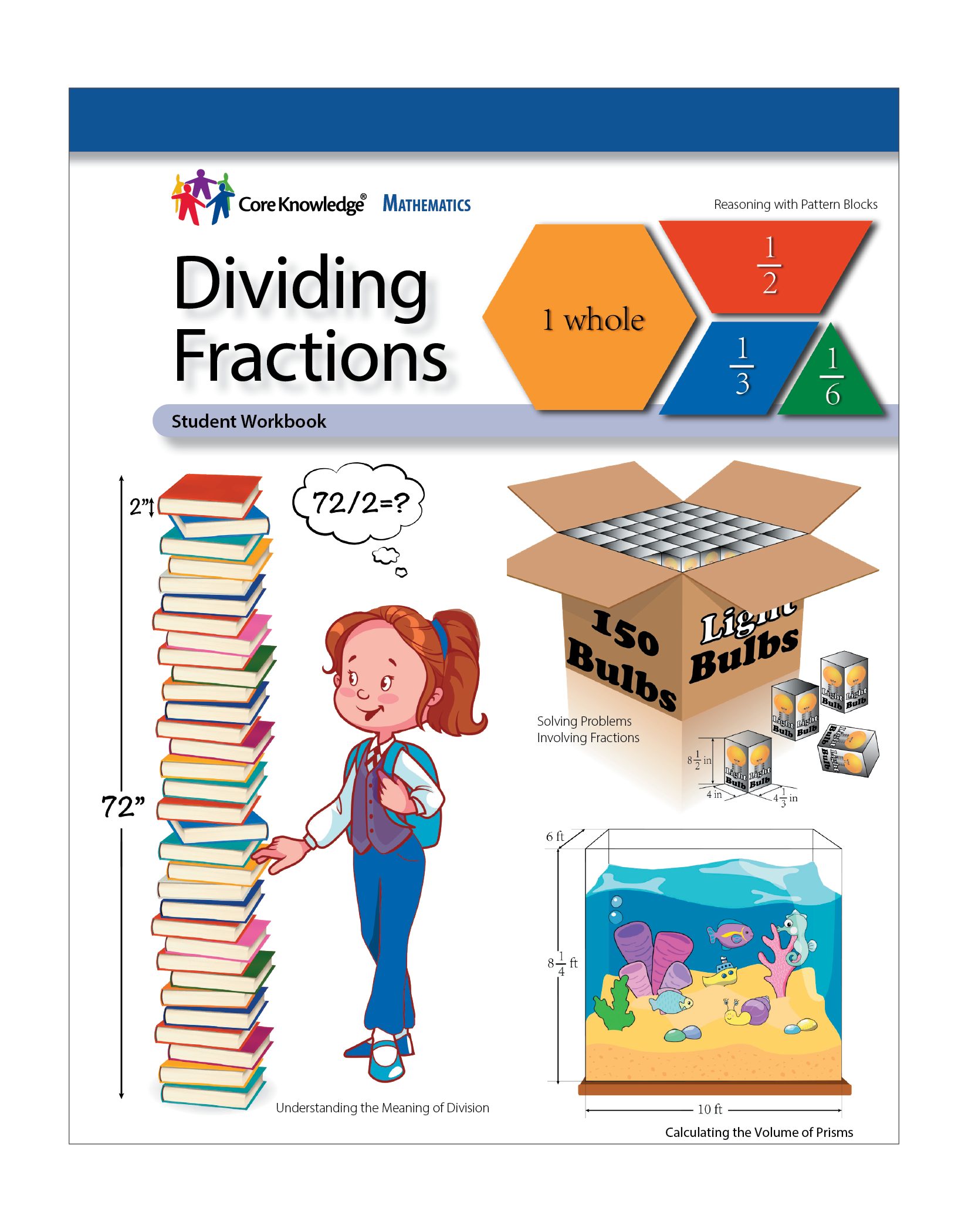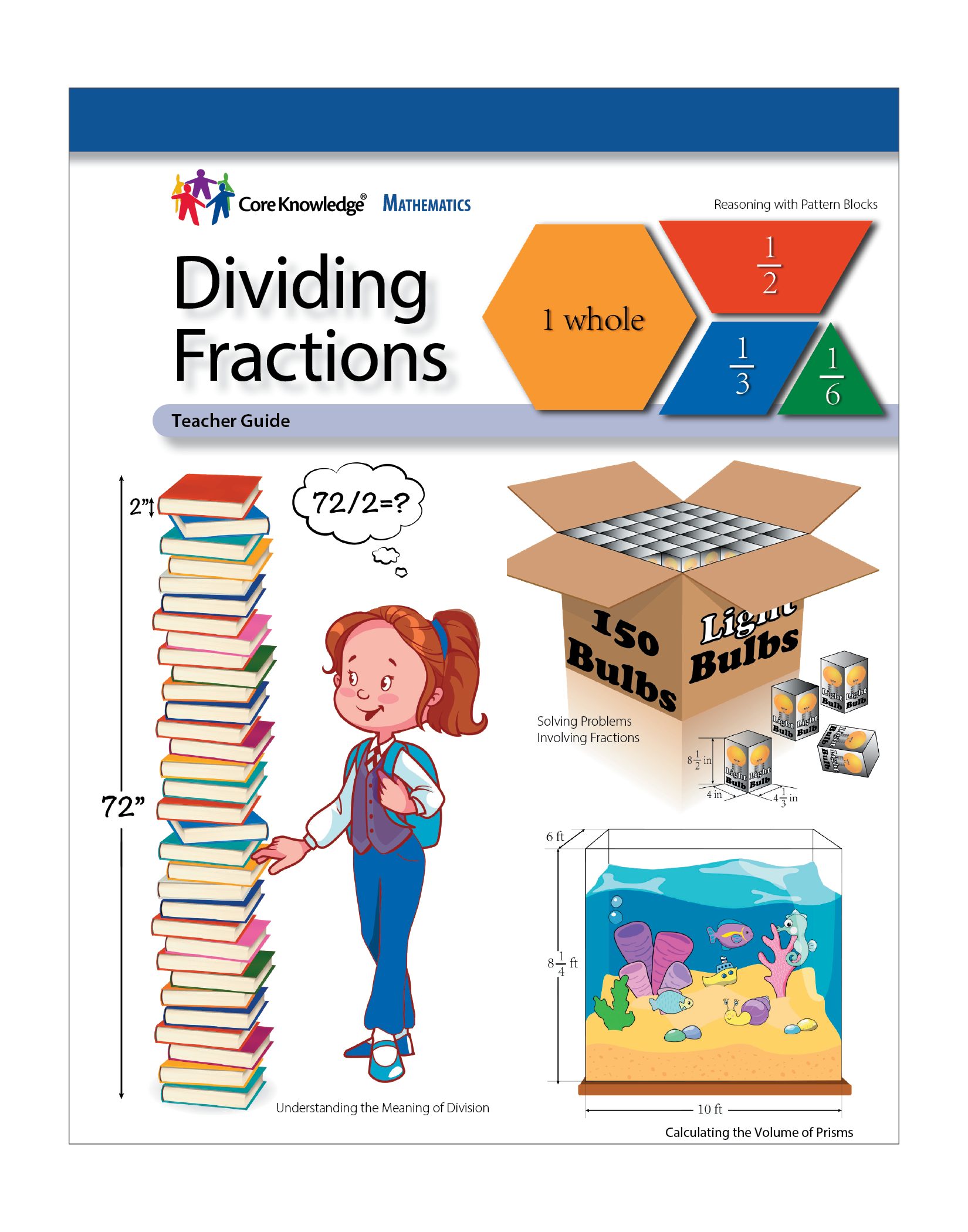
CKMath Unit 4: Dividing Fractions
Focus:
In this unit, students build upon their knowledge and skills in operations and algebraic thinking, particularly the knowledge of multiplicative situations developed in grades 3 to 5, making use of the relationship between multiplication and division. They begin by reasoning given certain situations, for example: in an equal groups situation when the group size is unknown, division can be used to answer the question, “How many in each group?” If the number of groups is unknown, division answers the question, “How many groups?” For example, if 12 pounds of almonds are equally divided among several bags:
- There are 2 bags. How many pounds are in each bag?
OR - There are 6 pounds in each bag. How many bags were used?
They also reason in comparison situations that involve division, in which the size of one object may be unknown or the relative sizes of two objects may be unknown. For example, when comparing two ropes:
- A rope is 12 feet long. It is twice as long as another rope. How long is the second rope?
OR - One rope is 12 feet long and another rope is 6 feet long. How many times longer than the second rope is the first?
At the beginning of this unit, students consider how the relative sizes of numerator and denominator affect the size of their quotients. They first compute quotients of whole numbers, then—without computing—consider the relative magnitudes of quotients that include divisors which are whole numbers, fractions, or decimals.
Students move on to use tape diagrams to understand equal groups and comparison situations. They learn to interpret, represent, and describe these situations using terminology such as, “What fraction of 6 is 2?”, “How many 3s are in 12?”, “How many fourths are in 3?”, “Is one-third as long as…?,” “is two-thirds as much as…?,” and “is one-and-one-half times the size of…?”
In the third and fourth sections of the unit, students begin to compute quotients of fractions and relate their work back to the relationship between division and multiplication. They apply their new skills in the context of finding an unknown area or volume measurement, extending and connecting prior knowledge from grade 3 regarding the area of rectangles as connected to multiplication, and applying the formula for the area of a rectangle from grade 5. The unit ends with two lessons in which students apply what they have learned about working with fractions (including the volume formula) to solve problems in real-world contexts. Throughout the unit, they discuss their mathematical ideas and respond to the ideas of others.
Number of Lessons: 15
Instruction Time:
Approximately 50 minutes
(Please note that each lesson is designed for one instructional block, and may be divided into shorter or longer segments based on teacher pacing and student needs.)


